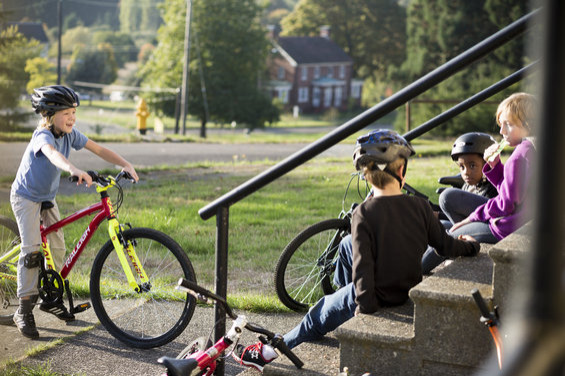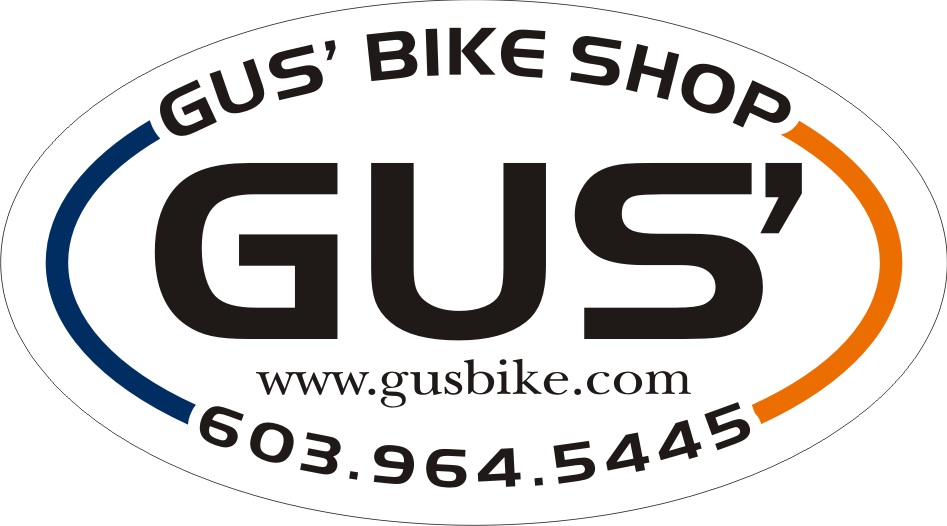Kids Bikes |  |
A bicycle is the ideal gift for your child. Besides offering great fun, bikes build health and fitness on every ride, provide economical transportation, and help to prepare kids for driving. Plus, with the dazzling paint and shiny chrome and the promise of adventure, few presents provide such joy for your child.
From a parent's point of view, however, kids bikes can be confusing because there are so many different types. You could just ask your kid to explain, but that would ruin any surprise. You can also visit us here at Gus' Bike Shop to check some out. In the meantime, we've put together this guide to help get you up to speed.
Size Matters
The first step in selecting a bicycle is determining what size your child requires. Adult bicycles are selected according to frame size. Kids bikes, however, are sized (and referred to) according to wheel size, as follows: Ages 3 to 5: 10- to 12-inch wheels; Ages 4 to 7: 16-inch; Ages 6 to 13: 20-inch; Ages 9 to 13: 24-inch; Ages 10 to adult: 26-inch or 700c.
Fitting a bike is more than determining age and height, though. You must evaluate coordination and cycling experience, too. For example, taller children lacking confidence do much better on smaller bikes because they feel more comfortable and in control. And a coordinated 10-year-old with long legs might be ready for a full-size bike.
The most important factor is safety. Don't make the common mistake of buying too big a bike expecting your child to grow into it. Oversize bikes are dangerous and can cause crashes. They're also discouraging to ride. These things may turn your kid off to cycling.
When you're checking bike fit, make sure that the child can sit on the seat and place both feet firmly on the ground, which means he'll be able to hold himself upright and get on and off without difficulty. If the bicycle is equipped with training wheels, it's okay if the child reaches the ground with his toes only, because the training wheels support him. As he develops balance, gradually raise the training wheels so he gets used to leaning the bike to turn.
It's also important that children can comfortably reach the handlebars and steer. If the bars are out of reach, steering will pull them forward causing a loss of control. Plus, if the bicycle has hand brakes, it's crucial that the child's hands can reach and operate the controls. If the child doesn't have the hand strength to operate the levers, it's usually possible to adjust the brake system to make it easier for them, which a bike shop will help you with during the purchase.
The Right Ride
The Right Ride
If your child is very small, you might be able to pick out a bike for them. Once they get a little older, though, this gets tricky. Remember that it's their bike and keep in mind that they're more likely to want to ride and to get excited about biking if they've got the two-wheeler they like best. Because it's just as much about style as size, parents usually get it wrong on their own.
To find out what they want and keep the gift a surprise, check what your child's friends ride. You might also look for clues in magazine pictures or catalogs in their room. Or, bring your bike into the shop for service and keep on eye on the bike that attracts Junior's attention. These ideas should ensure that you pick a winner. Also, most professional bicycle retailers will let you return an unused new bicycle if it turns out that your child had her heart set on a different type.
Where To Buy
While it's true that you can purchase kids bikes at many department and toy stores, we recommend buying from a professional bicycle dealer - Gus' Bike Shop. You may pay slightly more, however, you get a lot more, too. A superior bike, built by a professional mechanic so that it stays together.
Here at Gus', we have the tools and expertise to carefully assess your child and fine-tune bike fit so that you get the right bike and a safe bike. Plus, because we guarantee new bikes, we only stock quality models tough enough to withstand even the most rigorous riding.
We will professionally assemble your new bicycle at no additional charge and offer a free mechanical check-up in 30 days or so, an important detail because parts usually require adjustment after breaking in. This tune-up will catch any problems and ensure that the bike runs trouble free. Try taking your bike back to a chain store for a tune up!
Besides superior service, our bikes are superior, too. Where the chain-store models can sport moving parts turning on plastic bushings, the bike-shop models use serviceable ball bearings. Often, department-store bikes feature non-adjustable handlebars, which compromise the fit and adjustability. Construction is usually cheap steel alloy and plastic parts versus the high-tensile steels and aluminum parts found on bike-shop models. In the long run, these details add value because the bike is easier and more enjoyable to ride, breaks down less often and can be handed down to a sibling or fetch a good price when it's time for a bigger bike.
We look forward to working with you to put a big smile on your child's face. See you at Gus' Bike Shop!

